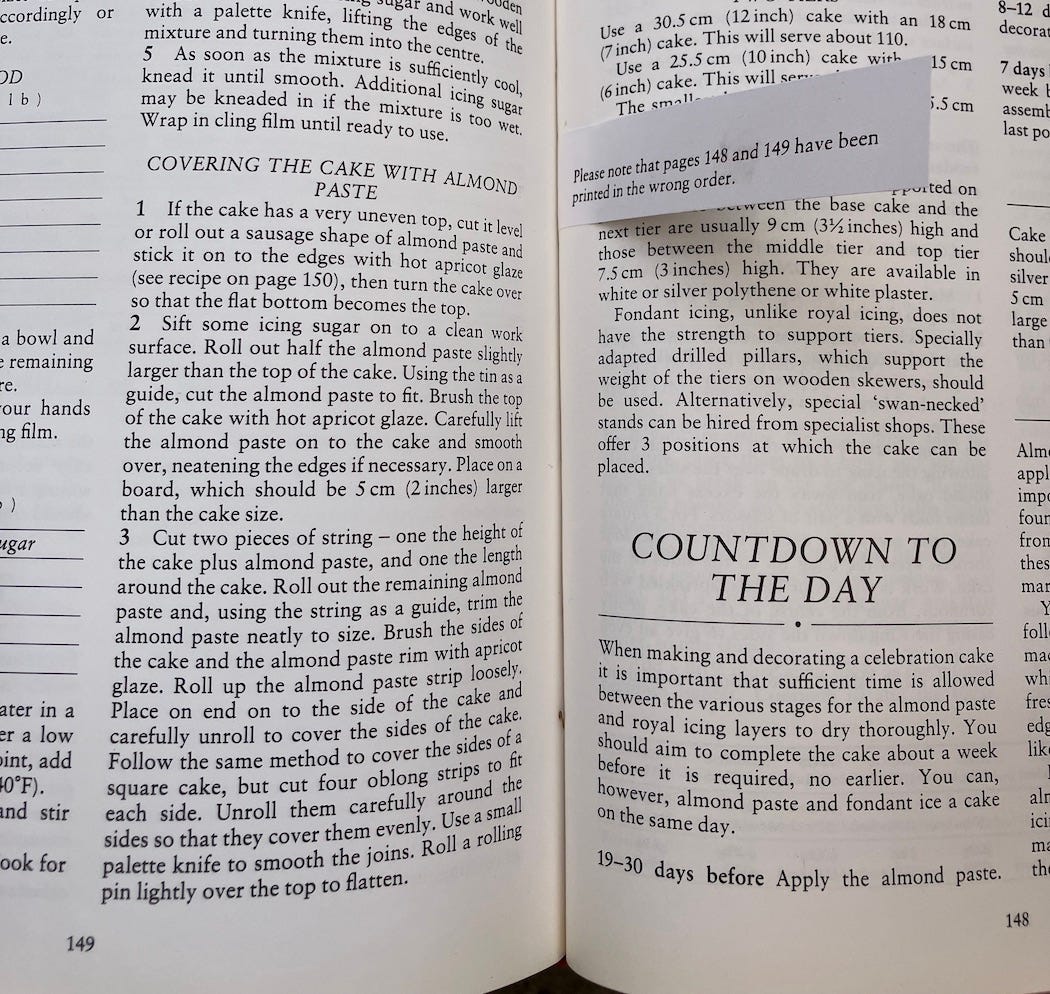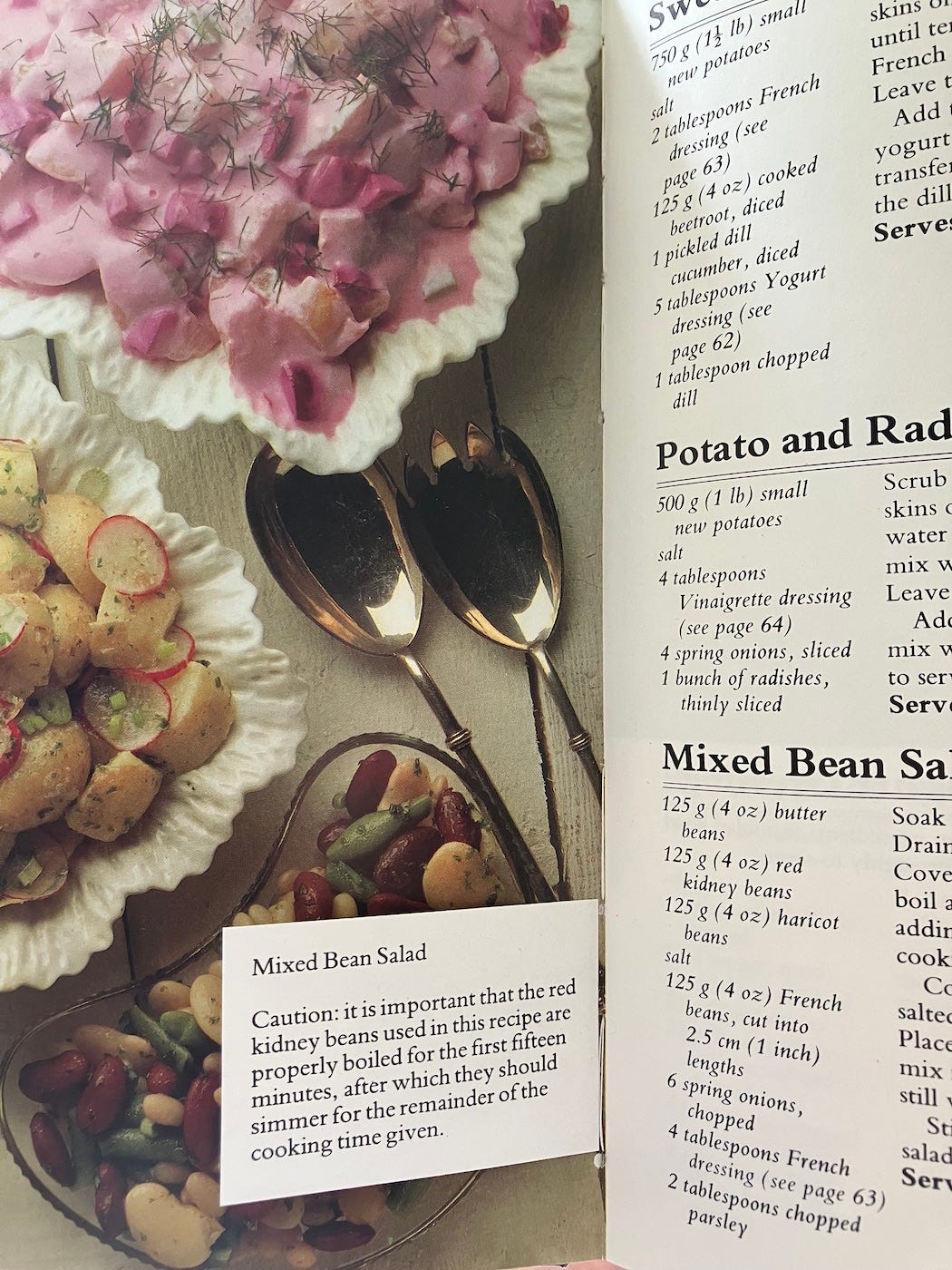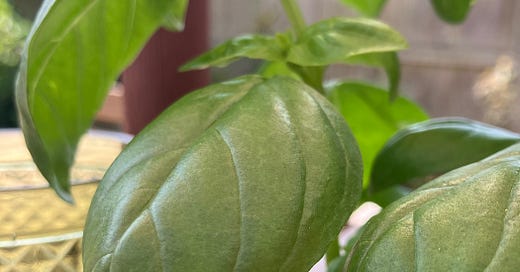I’m writing this to you from the garden table, next to a little pot of basil that’s been enjoying this week’s mix of sun and rain.
I just ‘popped’ an upturned basil leaf – have you ever done that before? Pressed the leaf between your thumb and index finger to ‘right’ it? It makes a soft ‘pop’ sound. It’s a supremely satisfying feeling, and one that, this morning, unlocked a childhood memory of those ‘hopper popper toys’ from the nineties. Well, I thought from the nineties, but when I looked them up just now, I also found this excellent patent application from the late thirties:

In the patent application, inventor Jerome Davis describes the popper toy as ‘hemispherical’ – what a great word. He also says this, which seems really sweet:
The general effect of the operation of my toy is quite surprising. Because of the interval between the time the toy is placed inside out on the flat surface and the time it jumps into the air, the top appears to jump of its own accord. The toy also jumps surprisingly high.
Also in the search results: a 2019 blog from Oxford University: “In a series of videos launching the Mathematical Observer, a new YouTube channel showcasing the research performed in the Oxford Mathematics Observatory, Oxford Mathematician Michael Gomez (in collaboration with Derek Moulton and Dominic Vella) investigates the science behind the jumping popper toy.” I love that three people are needed to investigate; tbh I wish I’d been one of them.
Watching this video made my day – the t-shirt! the colander! the kettle! the hairclip! the diagrams!
(And yes I did watch both parts one and two).
…
The scent of basil, woken up by the leaf-popping, is reminding me of what I was going to write about today; not hopper poppers (much as I would be happy to keep saying and typing those two words) but: typos and mistakes in cookbooks. (Not a bad swap of topic, sound-wise, with the matching perfect rhyme).
Yesterday, we made some rock cakes (when I say we, I mean: Lee), and I was flicking through the recipe book when I found this correction:

Checking page numbers in a proof is one of my favourite tasks on my proofreading checklist because it’s one of those tasks where you think ‘they’re probably all correct’, but often – more often than you might think – they’re not, and you just feel really glad to have done things thoroughly. It’s like finding the final difference in a ‘spot the difference’.
I love how neat this correction is – the slip of paper. Although I suppose its simplicity does downplay the presumably quite extreme stress that would come with trying to create a DIY multi-tiered wedding cake, to find that things are at risk of coming unstuck with the almond paste.
(By the way, the intro for that rock-cakes recipe is worth a mention, too. It says: “The title refers to the buns’ shape, not texture!“)1
It reminded me of another favourite correction in my oft-used (if really rather retro) Sainsbury’s Book of Wholefood Cooking (Cathay Books, 1981).

I wonder how they discovered the mistake? I hope nobody chipped a tooth on a bean. Perhaps that’s why these correction slips seem more common in cookery books than other books – because if a mistake is made, the consequences could include someone choking on a salad or ruining a wedding day? Kudos to the cookbook editors for these no-fuss fixes to make sure everyone cooks and eats well.
…
I’ve been searching for a third example in this celebration of cookbook corrections, because I felt like it needed to be a trio, but looking through recipes has just made me hungry for lunch.
Then I remembered a different kind of example: our local parish church magazine, which would sometimes print the quarterly ‘Recipe from the vicar’s wife’ without telling you what you were making. The ingredients list? Yes. The method? Yes. The recipe title? No.
I loved the idea that someone might have popped on a pinny, rolled up their sleeves, and trusted in the process. It would have been kind of miraculous to bake/cook that way; a true test of faith. I was genuinely sad when the error got corrected for good.
The book is the Good Housekeeping Complete Book of Home Baking, Ebury Press, 1989. It was published in association with Tate & Lyle, so if you ever bake something from it, I recommend reducing the sugar by quite a bit!




